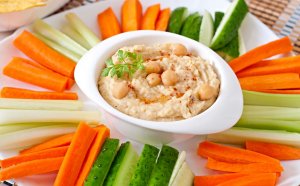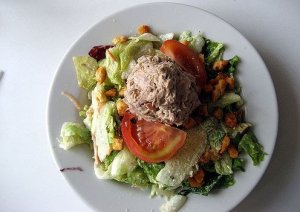Protein-Rich Snacks to Enjoy Between Meals

Protein is one of the nutrients that athletes need the most. We can eat protein-rich snacks at any time of day, as they provide energy while helping our muscles to stay in shape. Let’s take a look at some protein-rich snacks that you can enjoy without worry.
Protein-rich snacks to keep you feeling full
Protein Sponge Cake
More and more people are adopting a healthy lifestyle. As a result, there are a variety of protein sponge cake options on the market. They are an amazing treat and do not compromise your diet.
If you can’t find any varieties of protein sponge cake that you like, or they’re too expensive for your budget, you can make it at home. It’s simple! Just use powdered oatmeal or bran instead of flour, honey or agave syrup instead of sugar, and add proteins in any flavor you like. You can also decorate the cake with a few nuts.

Cheese and crackers
Some whole-wheat, oatmeal, or protein crackers, with a few slices of ricotta cheese make a satisfying snack that will allow you to maintain your healthy lifestyle.
Natural fruit shake
Nowadays, you can find a variety of frozen fruits that you can use to make a delicious and refreshing shake. If you add low-fat milk and protein powder, you’ll have a snack that will stop your stomach from growling until dinner, or even the next day.
If you want to use a fruit shake as a dinner substitute, add a little oatmeal and honey (or agave syrup). This will make it a complete meal.
Greek yogurt
Although yogurt contains fat, it also offers high protein content. Greek yogurt in particular has 0.6 ounces of protein in each pack, in addition to vitamin B12 and calcium. To complement it, add a few nuts, which will provide carbohydrates and additional protein.

Hard-boiled eggs
Eggs are an incredible source of protein. As a result, they make a great snack that will satisfy you without adding too many calories to your diet. At just 75 calories each, you can eat them with a few slices of cold turkey breast.
Pumpkin seeds
Try to avoid fried pumpkin seeds. Instead, choose baked seeds with a pinch of salt. You can also make them yourself at home. Each cup contains 0.4 ounces of protein, and will satisfy your appetite until your next meal.
Hummus
Although garbanzo beans are the main ingredient in hummus, and they contain a lot of carbohydrates, they’re also a valuable source of protein. Hummus is one of the tastiest protein-rich snacks that still lets you stick to your diet.

Forget bread. Enjoy hummus with vegetables such as, celery, cucumber, and carrots.
Turkey meat
Cold turkey meat is an excellent source of protein. You can eat it with low-calorie thin bread, and combine it with lettuce, tomato, or even light mayonnaise.
Tuna salad
Tuna with tomato, cucumber, purple onion, and some sweet corn is a delicious salad that will tame your appetite, while providing all the nutrients you need.

Cottage cheese
Cottage cheese is low in calories and has plenty of protein. You can eat it on its own, or with a small amount of honey if you’re craving something sweet. If you’re in the mood for something savory, eat cottage cheese with tomato or cucumber.
All you need is some imagination and a knowledge of low-calorie foods, that are also high in protein. This way, you can enjoy more healthy and delicious snacks, just like the ones we described above.
Protein is one of the nutrients that athletes need the most. We can eat protein-rich snacks at any time of day, as they provide energy while helping our muscles to stay in shape. Let’s take a look at some protein-rich snacks that you can enjoy without worry.
Protein-rich snacks to keep you feeling full
Protein Sponge Cake
More and more people are adopting a healthy lifestyle. As a result, there are a variety of protein sponge cake options on the market. They are an amazing treat and do not compromise your diet.
If you can’t find any varieties of protein sponge cake that you like, or they’re too expensive for your budget, you can make it at home. It’s simple! Just use powdered oatmeal or bran instead of flour, honey or agave syrup instead of sugar, and add proteins in any flavor you like. You can also decorate the cake with a few nuts.

Cheese and crackers
Some whole-wheat, oatmeal, or protein crackers, with a few slices of ricotta cheese make a satisfying snack that will allow you to maintain your healthy lifestyle.
Natural fruit shake
Nowadays, you can find a variety of frozen fruits that you can use to make a delicious and refreshing shake. If you add low-fat milk and protein powder, you’ll have a snack that will stop your stomach from growling until dinner, or even the next day.
If you want to use a fruit shake as a dinner substitute, add a little oatmeal and honey (or agave syrup). This will make it a complete meal.
Greek yogurt
Although yogurt contains fat, it also offers high protein content. Greek yogurt in particular has 0.6 ounces of protein in each pack, in addition to vitamin B12 and calcium. To complement it, add a few nuts, which will provide carbohydrates and additional protein.

Hard-boiled eggs
Eggs are an incredible source of protein. As a result, they make a great snack that will satisfy you without adding too many calories to your diet. At just 75 calories each, you can eat them with a few slices of cold turkey breast.
Pumpkin seeds
Try to avoid fried pumpkin seeds. Instead, choose baked seeds with a pinch of salt. You can also make them yourself at home. Each cup contains 0.4 ounces of protein, and will satisfy your appetite until your next meal.
Hummus
Although garbanzo beans are the main ingredient in hummus, and they contain a lot of carbohydrates, they’re also a valuable source of protein. Hummus is one of the tastiest protein-rich snacks that still lets you stick to your diet.

Forget bread. Enjoy hummus with vegetables such as, celery, cucumber, and carrots.
Turkey meat
Cold turkey meat is an excellent source of protein. You can eat it with low-calorie thin bread, and combine it with lettuce, tomato, or even light mayonnaise.
Tuna salad
Tuna with tomato, cucumber, purple onion, and some sweet corn is a delicious salad that will tame your appetite, while providing all the nutrients you need.

Cottage cheese
Cottage cheese is low in calories and has plenty of protein. You can eat it on its own, or with a small amount of honey if you’re craving something sweet. If you’re in the mood for something savory, eat cottage cheese with tomato or cucumber.
All you need is some imagination and a knowledge of low-calorie foods, that are also high in protein. This way, you can enjoy more healthy and delicious snacks, just like the ones we described above.
All cited sources were thoroughly reviewed by our team to ensure their quality, reliability, currency, and validity. The bibliography of this article was considered reliable and of academic or scientific accuracy.
- Centro Médico de la Universidad de Tennessee (2018). Los beneficios de comer yogur griego. https://www.utmedicalcenter.org/es/the-benefits-of-eating-greek-yogurt/
- Chorques Payá, A. (2018). “Diseño y caracterización de un bizcocho con elevado contenido en proteínas de origen vegetal de alto valor biológico.”. http://hdl.handle.net/10251/109455
- Magariños Hawkins, H., Gonzalez Esbry, M. E., Selaive Villarroel, S., & Pizarro Casner, O. (2009). ELABORACIÓN DE QUESO RICOTTA A PARTIR DE CONCENTRADO PROTEICO DE SUERO (CPS). Agro sur, 37(1), 34–40. https://doi.org/10.4206/agrosur.2009.v37n1-04
- Martínez Augustin, O., & Martínez de Victoria, E.. (2006). Proteínas y péptidos en nutrición enteral. Nutrición Hospitalaria, 21(Supl. 2), 01-14. Recuperado en 25 de diciembre de 2022, de http://scielo.isciii.es/scielo.php?script=sci_arttext&pid=S0212-16112006000500002&lng=es&tlng=es.
- Tunick, M. H. (2014). The science of cheese. Oxford University Press.
- USDA. (2018). Edamame, congelado, preparado. https://fdc.nal.usda.gov/fdc-app.html#/food-details/168411/nutrients
- USDA. (2019). Semillas, pepitas de calabaza y calabaza, enteras, tostadas, sin sal. https://fdc.nal.usda.gov/fdc-app.html#/food-details/170188/nutrients
- USDA. (2019). Pavo, entero, carne y piel, cocido, asado. https://fdc.nal.usda.gov/fdc-app.html#/food-details/171479/nutrients
This text is provided for informational purposes only and does not replace consultation with a professional. If in doubt, consult your specialist.








